Excerpts from Jim Conrad's
Naturalist Newsletter
from the March 29, 2015 Newsletter issued from Río Lagartos, on the north-central coast of Yucatán, MÉXICO
HALITE/ ROCK SALT
Ron from Colorado wanted to see the salt ponds at Las Coloradas. When we got there he was as impressed as anyone by the huge network of interlocking ponds, the algae-pink waters, the wild feeling of the absolutely flat, wind-scoured landscape, and by the remarkable heaps and mounds of snowy foam, or biofoam. Recently we looked at a pink-water pond and part of the salt-making factory at https://www.backyardnature.net/n/15/150315pk.jpg.
We've examined the phenomenon of the biofoam at https://www.backyardnature.net/yucatan/sea_foam.htm.
I told Ron that sometimes you could find conglomerations of salt crystals. Ron was interested in this, so we went looking. Below, you can see salt crystals at a pond's edge:
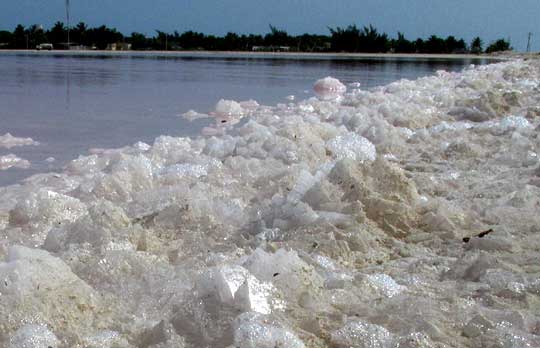
It was easy to pick up egg-sized chunks of fused salt crystals, as shown below:
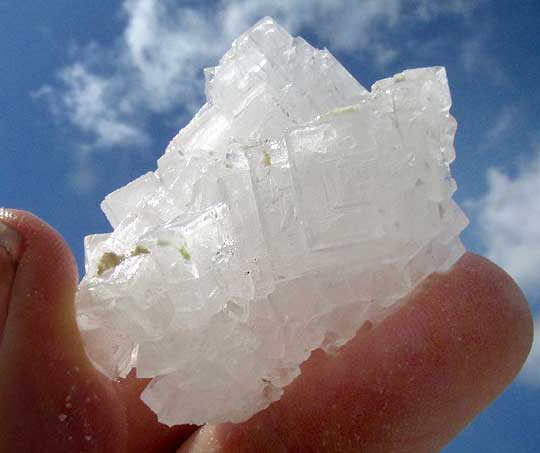
Even without a magnifying lens you could see that this was salt, because the crystals composing it formed little cubes. If you'd crush this cluster the right way, you'd end up with tiny grains of table salt, each grain being a cube with six equal faces, and all the cube's edges uniting at 90° angles. If the crystals had formed rhombohedrons, with some angles being larger than 90° and others less, we'd probably have crystals of the mineral called calcite. Below, a closer look at the above cluster better shows the crystals' cubical nature:
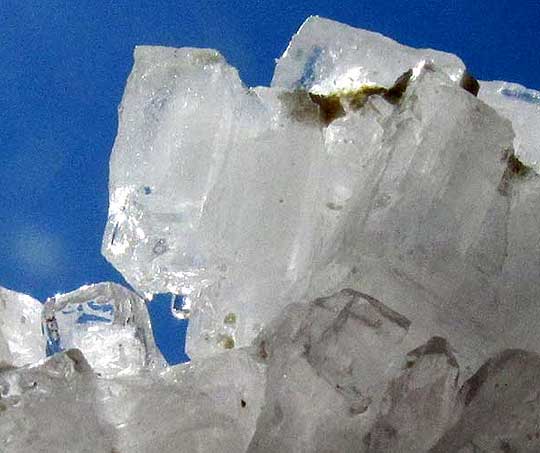
Some of those crystalline units look more like long boxes than cubes, and the crystals aren't neatly aligned as they would be if all were perfectly cubical. That's because crystals habitually grow together, angles and faces can be distorted by impurities, and parts can be eroded away, destroying the crystal's symmetry. Crystal form is defined by the configuration of atoms in the crystal's molecule. Atoms of calcite gather themselves into patterns forming rhombohedrons, while atoms of salt bond with another at right angles, resulting into cube shapes.
Not only did we find small coagulations of crystals, but also slabs of salt such as what's shown in my hand below:
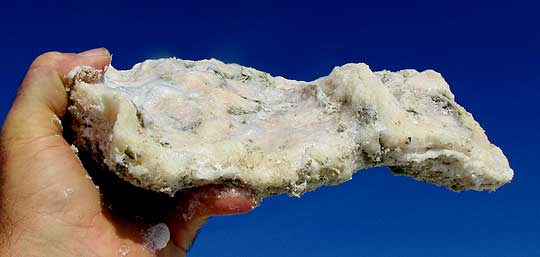
That was picked up from atop muddy sand at a salt pond's edge where wind-deposited mounds of foam evaporate. The object consists of salt mixed with impurities such as the sand it formed atop, and organic matter in the foam. It was hard to find cubical crystals in it because impurities disrupted crystal growth. Still, if we could have ground up this object into tiny enough particles and looked at them under a microscope, they'd have been perfectly formed cubicle crystals.
Years ago someone pounded a wooden pole into the salt pond and a similar mass of impure salt formed around it. Below you can see the remains of that pole, with its naked end pointing toward the picture's top, right corner:
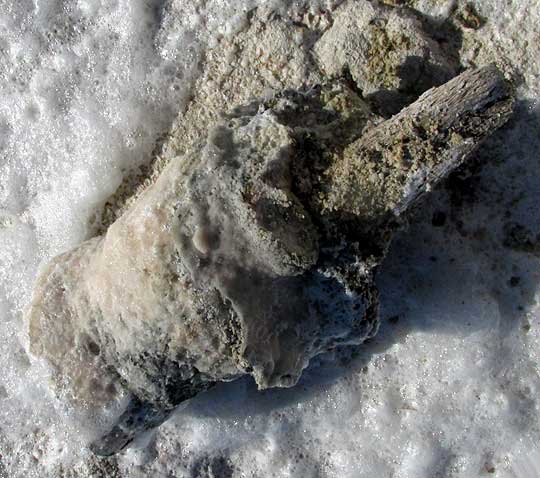
When salt crystals form such rock-like masses, the masses are referred to as rock salt. If the rock salt is pure enough to be thought of as a mineral with a chemical formula, we can call it halite, and write its chemical formula as NaCl -- which is sodium chloride, or salt.